Project Final Summary
My project centers around the analysis of electrical consumption, specifically involving the HPA Campus energy audit. I use the ELAB's advanced telemetry system, which turns data from remote sensors into graphs. I analyze those graphs by first identifying energy fingerprints by size, shape, context, and pattern. By analyzing and identifying energy fingerprints, and they are uniquely expressed on a graph, I am able to determine better and more specficially how electricity is being consumed. From there, I analyze larger patterns and go on to make calculations to outline the current consumption. Then I make more calculations and recommendations on how the energy could be conserved or used more efficiently.
Over the past two years, I have collected, calculated, and analyzed much for the HPA Campus Energy Audit, which has been my primary focus. Overall, I've left a large base of work that can be acted on or further analyzed to improve energy consumption on campus. My goal was to help the school achieve energy efficiency, and while it hasn't happened yet, I think my work has helped progress this improvement. Initially, I wanted to complete the audit myself, but it is a large undertaking and I will be leaving it to a very capable rising senior, Alice Patig. I will be leaving my work to her to build on and make her own. I have taught her what I can in person, and I will be leaving the rest for her on my weblog, which she can always reference.
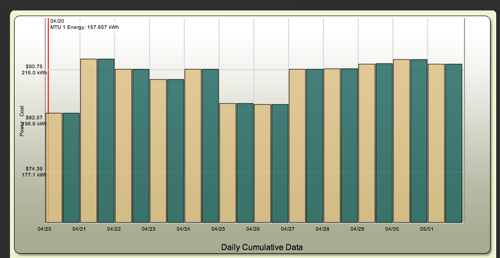
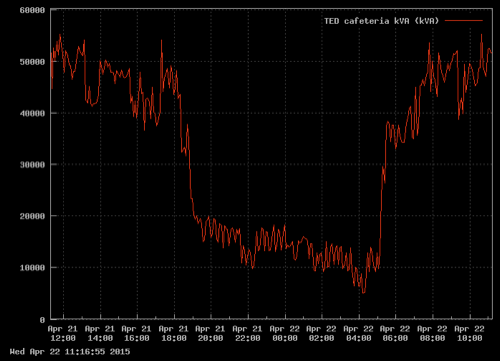
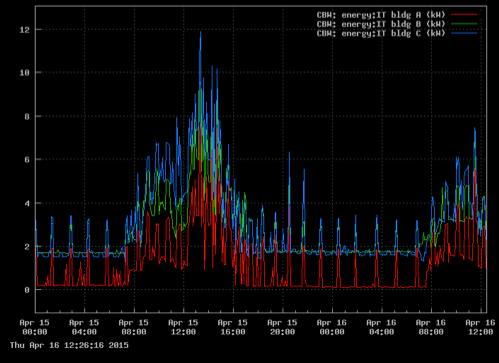
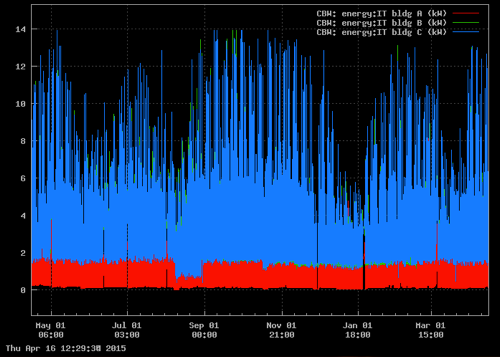
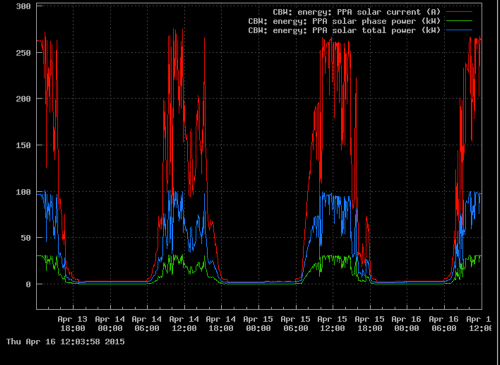
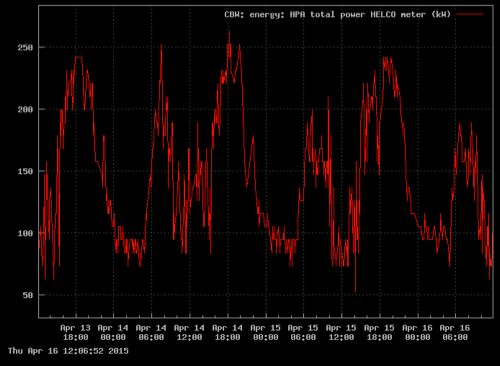
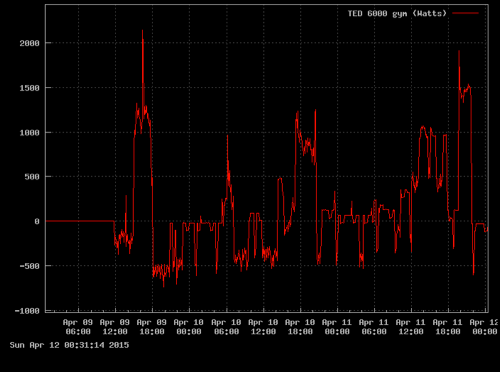
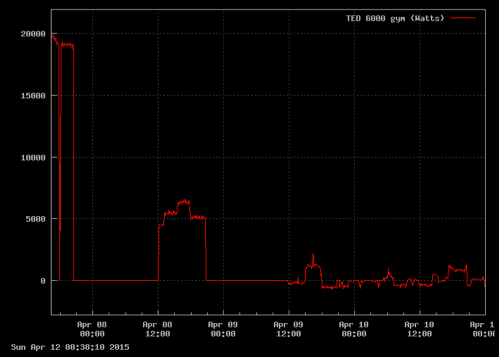
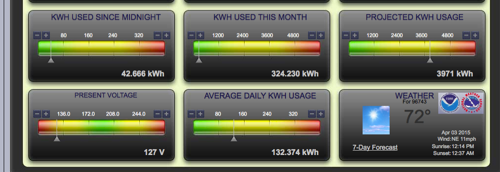

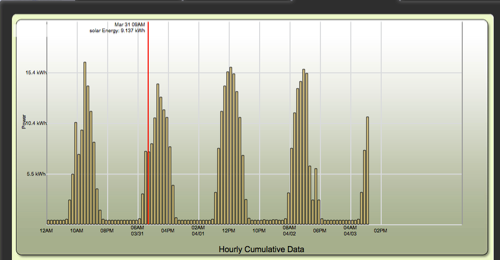 After looking at the TED Pro site designated to the PPM solar system, I also looked at their daily graphing. It based on the sunlight converted to energy, so when there is less sunlight the graph displays that. On the first pyramid of data from 3/30 spikes of nearly 13 kWhs, which is roughly double the previous reading. This spike is followed by a large decrease to approx 9 kWhs, but the graph quickly recovers after and continues to climb. This decrease is due to the cloud cover. On 4/2 the same event was displayed at 3-4 pm. This lapse in energy is due to the changing weather. It will be interesting to see the patterns of data through the different seasons. Over the period of years the comparison of energy would be insightful to the changing weather. It could also reveal the effects of global warming and vog along with economically benefiting the school.
After looking at the TED Pro site designated to the PPM solar system, I also looked at their daily graphing. It based on the sunlight converted to energy, so when there is less sunlight the graph displays that. On the first pyramid of data from 3/30 spikes of nearly 13 kWhs, which is roughly double the previous reading. This spike is followed by a large decrease to approx 9 kWhs, but the graph quickly recovers after and continues to climb. This decrease is due to the cloud cover. On 4/2 the same event was displayed at 3-4 pm. This lapse in energy is due to the changing weather. It will be interesting to see the patterns of data through the different seasons. Over the period of years the comparison of energy would be insightful to the changing weather. It could also reveal the effects of global warming and vog along with economically benefiting the school.